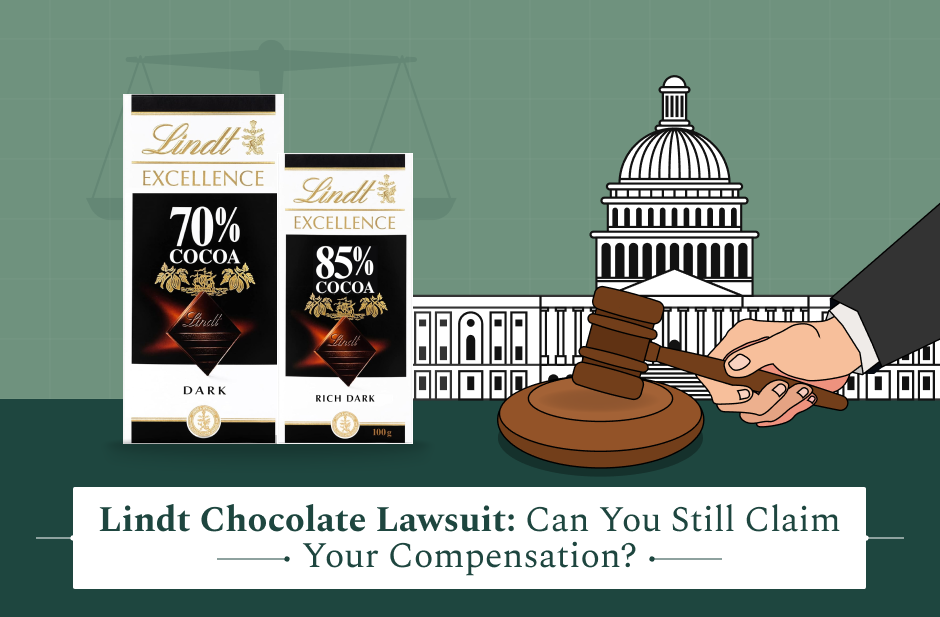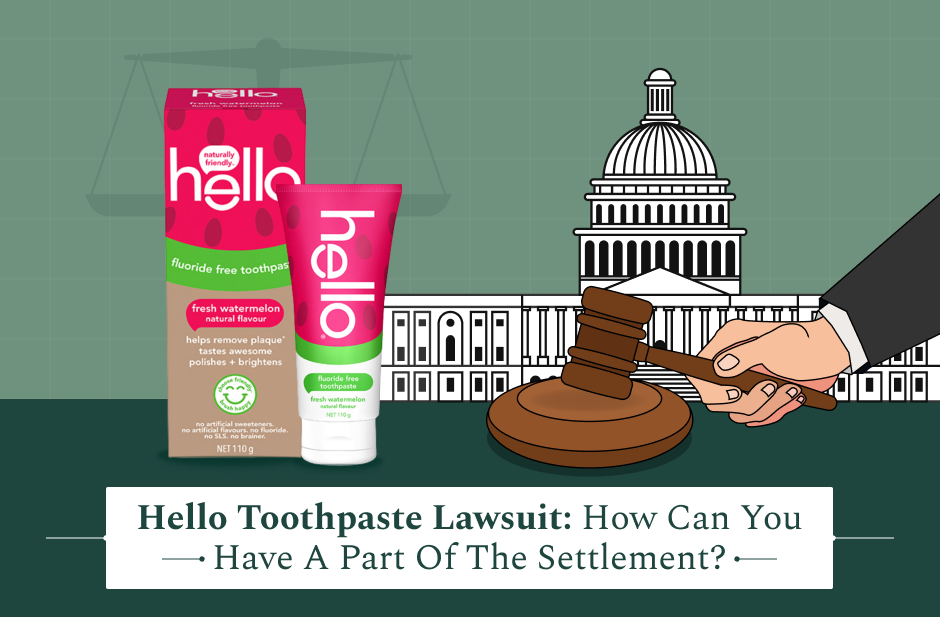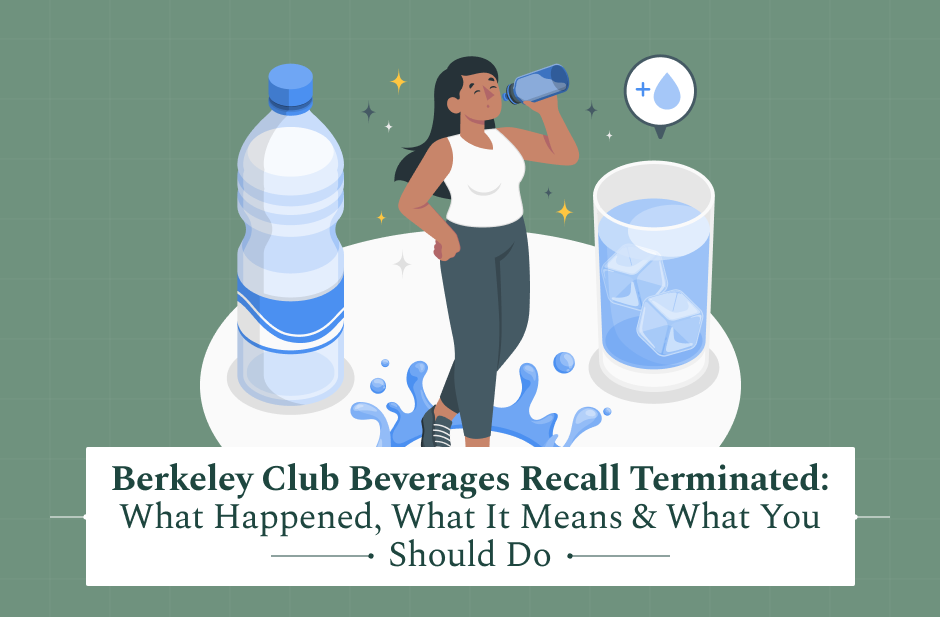- In 2023, a group of people joined forces and filed a class-action lawsuit against Lindt chocolates after a study revealed that some of their chocolates contained high levels of heavy metals.
- The court documents indicate that the plaintiffs made an accusation that the chocolatier was aware of the lead and Cadmium content but decided not to communicate it.
- On the contrary, Lindt refused to admit any fault and claimed that all their products meet the required safety standards.
At the point of buying a luxury chocolate, you are entitled to get superior flavor and quality guarantee. However, a recent class-action lawsuit is tarnishing the image of Lindt’s dark chocolate bars.
The suit, which came after a Consumer Reports study in 2023 that led the publication of two of Lindt’s 70 % and 85 % cocoa bars with elevated levels of lead and cadmium, is prompting tough questions about food safety and marketing claims for luxury treats.
If you have been a Lindt fan and have purchased the chocolates, then you must read this article. So, if you are interested in finding out what steps, if any, you can take to get a compensation, continue reading this article till the end…
About The Lindt Chocolate Lawsuit
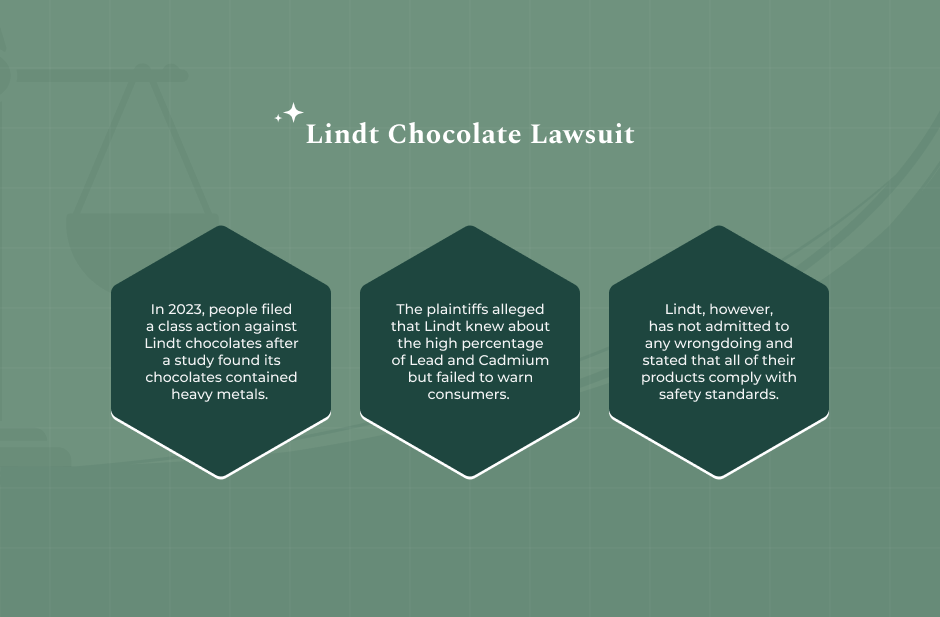
In December 2022, Consumer Reports published results from testing 28 dark chocolate bars. “For 23 of the bars, eating just an ounce a day would put an adult over a level that public health authorities and CR’s experts say may be harmful for at least one of those heavy metals,” the report mentioned.
Among them, Lindt’s Excellence Dark Chocolate 70 % Cocoa and 85 % Cocoa bars showed high heavy metal levels. These, if consumed regularly, could exceed California’s most protective daily limits—0.5 micrograms for lead and 4.1 micrograms for cadmium.
In other words, just a mere one-ounce serving could exceed those thresholds.
Once this study was out for public scrutiny, the chocolate lovers all over the internet could not keep their calm. For instance, consumers started discussing this scandal on several platforms, including TikTok.
In early 2023, consumers across several states—including California, New York, Florida, Illinois, Alabama, and Nevada—filed a class-action lawsuit in the U.S. District Court for the Eastern District of New York.
The case alleges Lindt misled buyers with premium marketing while failing to warn about harmful heavy metals in those bars— claims that many consumers argue influenced their purchase decisions at a higher price point.
For instance, as stated by All Recipes, the individuals initiating the lawsuit claimed that they paid high-end prices for Lindt chocolate bars as they believed that they were getting good quality and safe dark chocolate.
Major Allegations In The Lindt Chocolate Lawsuit
As per court documents, the Swiss cocolatier company Lindt & Sprungli faced several allegations after the CR study came to light. For instance, while the company advertised its products as “expertly crafted with the finest ingredients,” it failed to disclose the presence of heavy metals.
“The plaintiffs allege that they paid a premium price for these bars based on Lindt’s representations about the quality and safety of its ingredients. They claim they would not have purchased the chocolate, or would have paid less for it, had they known it contained lead and cadmium,” reports Injury Claims.
Here are some of the key allegations that you need to know about:
- Misleading marketing: Packaging touts phrases like “expertly crafted with the finest ingredients” and “excellence,” suggesting safe, high-quality products. Yet heavy metal findings challenge those assertions.
- Failure to disclose health risks: The Lindt chocolate lawsuit states that they didn’t inform consumers, even though California’s Prop 65 sets strict disclosure rules when heavy metal levels exceed safe thresholds.
- Unjust premium pricing: Consumers paid top dollar, believing in product safety. Had they known about heavy metal content, they might not have bought—or would’ve paid less.
Lindt’s Defense & The Court’s Reaction
As per court documents, in the year 2014, “Defendant’s dark chocolate products were tested by a consumer advocacy group and Defendant was informed that some of its dark chocolate products had dangerously high levels of lead, a subject of concern for the group and for consumers at large.”
This clearly means that the company was well aware of the presence of heavy metals. However, they did not take any action to curb the matter. Nor did they inform the consumers about the presence of such harmful metals.
However, after CR outed them, followed by the subsequent Lindt chocolate lawsuit, the company pushed back hard. Here are a few things that they stated in their defense:
- First, they claimed trace metals are unavoidable, naturally present in soil and cocoa beans, and still asserted their products fall within safety standards and declaration rules.
- Second, they argued that words like “excellence” and “expertly crafted” are merely advertising puffery—fluffy marketing that no reasonable customer would take literally.
But the court wasn’t convinced. It denied Lindt’s motion to dismiss. It ruled that a reasonable consumer could be deceived by such claims, especially when paying a premium for a product expected to be safe and of superior quality.
“While bars from other manufacturers had higher concentrations of heavy metals — including from organic brands — consumers insisted in the class action lawsuit that they had paid premium prices for Lindt because they believed they were “purchasing quality and safe dark chocolate”,” according to Fortune.
The legal strategy even backfired! By labeling its own marketing as non-literal puffery, Lindt inadvertently drew criticism for undermining its quality image.
Swiss media called it a “marketing masquerade” that dented trust more than it defended the company.
Health Risks of Lead & Cadmium
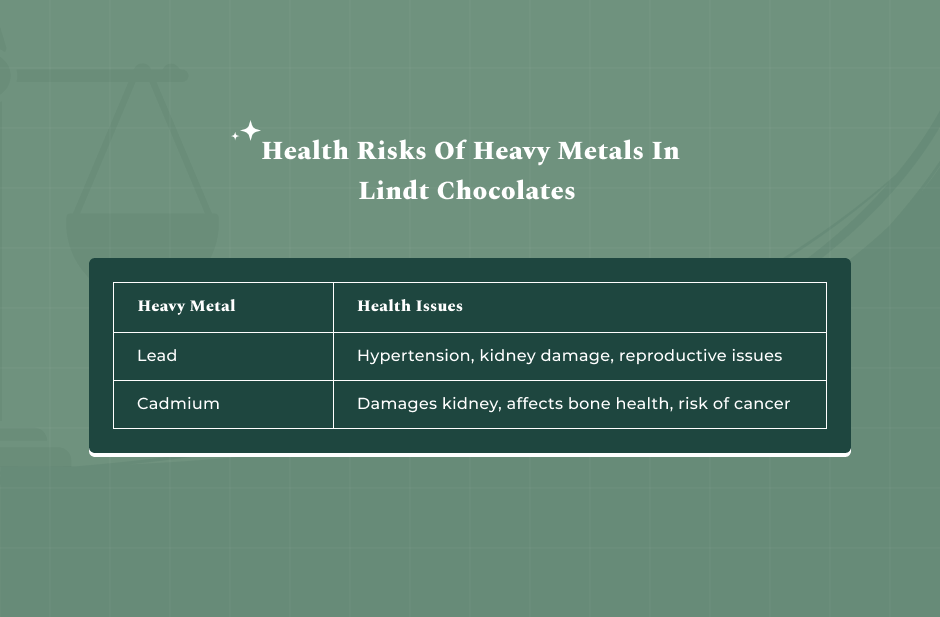
Heavy metals are no trivial matter. ClassAction.org, in its article on the ongoing Lindt Chocolate lawsuit, explained the health risks of such heavy metals in edibles.
- Lead is a well-known neurotoxin. In children, even low exposure can hamper cognitive development. In adults, it raises risks of hypertension, kidney damage, immune suppression, and reproductive issues. Pregnant people face even greater risks, including fetal harm.
- Cadmium is a carcinogen. It damages kidneys, affects bone health, and compromises respiratory function; long-term exposure increases cancer risk.
Though trace amounts may enter chocolate from soil or processing, in excess or with frequent consumption, they pose real dangers.
“According to experts, consistent and long-term exposure to even some amounts of heavy metals like lead and cadmium can have a variety of health problems,” reported Times Now.
California’s MADLs reflect the most conservative safety margins in the U.S., yet Lindt’s bars exceeded those in just one serving—80-116 % for cadmium, and 48-166 % for lead.
Can You Claim Compensation In The Lindt Chocolate Lawsuit?
If you feel that this has impacted you, then a class action settlement may be arranged in the future! This would mean a claims process.
Here is how to locate the claim form in case a settlement is made:
- Official Settlement Website: There is usually a dedicated site for the class action settlement. This is where information about the settlement, the eligibility criteria, and the claim form is provided.
- Class Action Lawsuit Information Sites: These sites that monitor class action lawsuits may provide information about this case. Additionally, it gives a link to the settlement website or the claim form.
At this point, the lawsuit is still ongoing, and there has been no settlement. Hence, an official claim form may not be available.
Broader Implications for Industry & Consumers
The Lindt chocolate lawsuit underscores a crucial shift: premium branding no longer shields companies from accountability on safety.
Heavy metals in food are real risks, and consumers—especially those paying a premium—deserve proper disclosure.
This lawsuit isn’t solely about Lindt but is illuminating the whole luxury chocolate segment:
- Growing Regulatory Pressure: The FDA’s “Closer to Zero” initiative is intended to establish the national standards for heavy metals. This includes lead, cadmium, arsenic, and other contaminants in foods. This is something that safety advocates and consumers have been requesting for a long time.
- Ethical Sourcing and Testing: The companies might be required to use cleaner sources. Additionally, they might have to change the harvest methods significantly. And engage a third party to lower the heavy metal content through testing.
- Marketing Transparency: The brands will have to deal with the increased examination of the use of such vague terms as “premium” or “expertly crafted.” Not only courts but also consumers are asking for real facts instead of mere words.
For the consumers, this trial is a reminder of the necessity to be alert all the time. Which is particularly true when it comes to buying expensive products of top-notch quality.
While the case is ongoing in 2025, staying informed, preserving your purchase evidence, and choosing safe alternatives are smart steps.
If you’ve bought those Lindt dark chocolate bars, keep an eye out! You may still have a path to compensation, if—and when—the case settles.
Frequently Asked Questions (FAQs):
Now that you have almost reached the end of this blog, we would advise you to take a look at some of these questions that people frequently ask about the Lindt Chocolate lawsuit:
Yes, it is possible to claim compensation if you are a member of the class action lawsuit pending and you meet the conditions. Irrespective of whether you bought the chocolate online or in a physical store, of course, if you are in one of the US states where the case was filed. The key factor is the purchase itself, not where it took place.
Since the lawsuit is still at the court stage, the time limit to submit a claim has not been set yet. A period for filing a complaint will only come into effect if and when the case is resolved by an agreement or a judge determines the consumers’ rights.
Long-term exposure to even low levels of these two heavy metals can lead to serious health issues as they accumulate in the human body. The risk is especially great for children who are the most vulnerable category of the population, and pregnant women.
In children, large amounts of lead can cause neurodevelopmental damage, modified mental status, and seizures. In adults, it may cause cardiovascular diseases, organ damage, and reproductive problems.
Lindt’s chocolate in general is not the subject matter of the lawsuit and the related health concerns. These are limited to only two specific dark chocolate products from Lindt, i.e., the Excellence Dark Chocolate 70% Cocoa bar and the Excellence Dark Chocolate 85% Cocoa bar.
Read Also:








